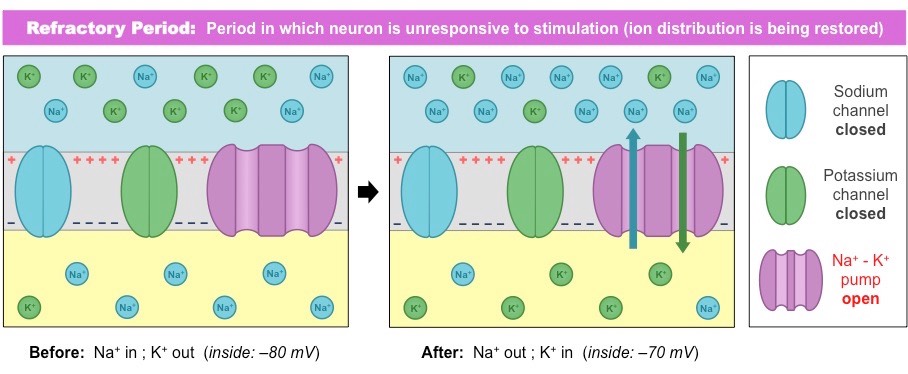![]()
Understanding:
• An action potential consists of depolarization and repolarization of the neuron
Action potentials are the rapid changes in charge across the membrane that occur when a neuron is firing
- Action potentials occur in three main stages: depolarization, repolarization and a refractory period
Depolarisation
Depolarisation refers to a sudden change in membrane potential – usually from a (relatively) negative to positive internal charge
- In response to a signal initiated at a dendrite, sodium channels open within the membrane of the axon
- As Na+ ions are more concentrated outside of the neuron, the opening of sodium channels causes a passive influx of sodium
- The influx of sodium causes the membrane potential to become more positive (depolarisation)

Repolarisation
Repolarisation refers to the restoration of a membrane potential following depolarisation (i.e. restoring a negative internal charge)
- Following an influx of sodium, potassium channels open within the membrane of the axon
- As K+ ions are more concentrated inside the neuron, opening potassium channels causes a passive efflux of potassium
- The efflux of potassium causes the membrane potential to return to a more negative internal differential (repolarisation)

Refractory Period
The refractory period refers to the period of time following a nerve impulse before the neuron is able to fire again
- In a normal resting state, sodium ions are predominantly outside the neuron and potassium ions mainly inside (resting potential)
- Following depolarisation (sodium influx) and repolarisation (potassium efflux), this ionic distribution is largely reversed
- Before a neuron can fire again, the resting potential must be restored via the antiport action of the sodium-potassium pump

